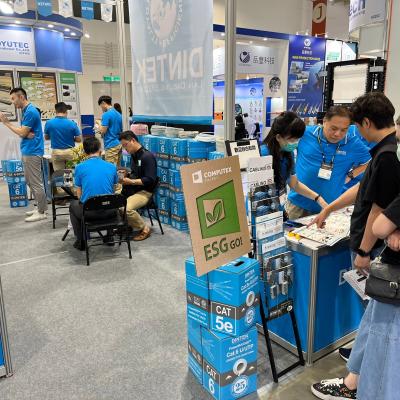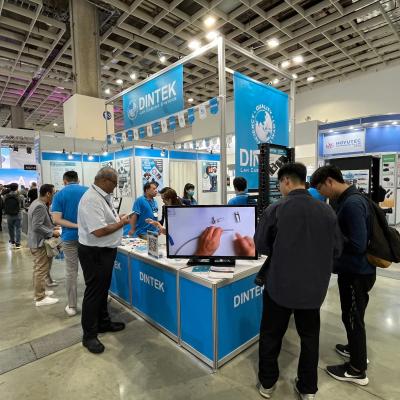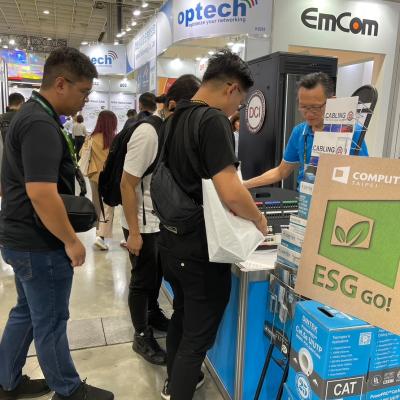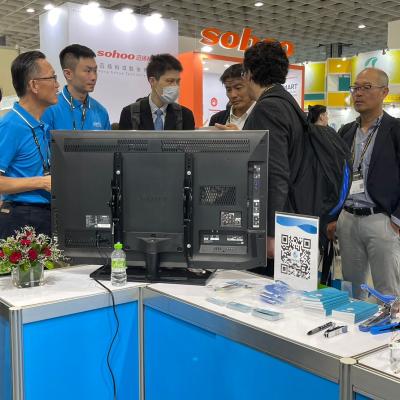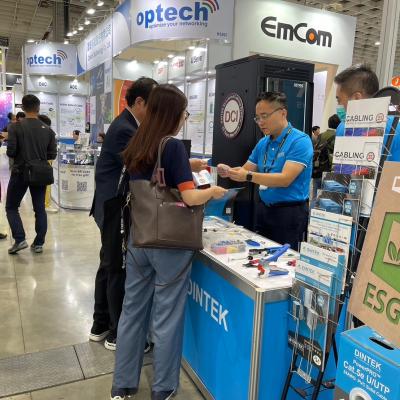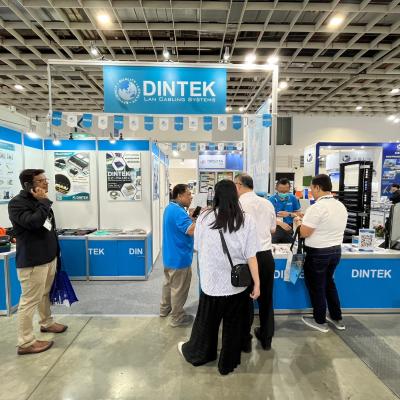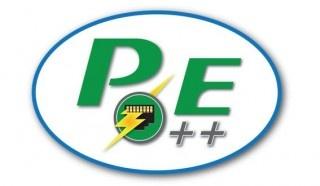
802.3bt 100w PoE - its benefits and implications for cabling
What are the benefits of the new standard and what has changed?

PoE's application base will increase enormously with the increase of power to the end device.
The main advantage for design engineers is based mostly on the saving in installation costs through the delivery of power and data on the same link compared to running on separate lines. This makes the installation and relocation of devices as simple as moving a standard CAT5/6 cable, instead of requiring an electrician to move ac power sources.
While the need to provide more power to the end device was the aim of the new standard, IEEE 802.3bt will also enable more efficient operation.
One of the downsides of the transition from 13 W per port to 25.5 W per port is that cable losses increased exponentially. The most effective means of improving efficiency is to inject power into all four pairs because this solution reaps the benefits of the basic squared relationship between current and power.
Using a two-pair PoE solution, cable loss power (PCL) can be calculated as: PCL = I2 ✕ R. Where R is channel resistance and I is the current carried by the two pairs. For a four-pair solution, the equation becomes:
PCL = (I/2)2 ✕ R + (I/2)2 ✕ R
PCL = 2 ✕ (I/2)2 ✕ R
PCL = (1/2) ✕ I2 ✕ R
Using a conservative estimate of 100 million deployed nodes and the data from the above table, the average cable loss with a two-wire PoE solution is 121.7 million kWh per year worldwide. With the four-wire PoE solution, the cable loss is 60.8 million kWh. In addition to reducing the environmental impact of PoE, a four-wire solution offers operators of large Ethernet-based installations with PoE systems considerable utility cost savings.
Losses due to power conversion will always make PoE less efficient than plugging the powered device into a power main, however as power conversion technology becomes more efficient, this difference will decrease and also has to be weighed against PoE's considerable installation cost savings.
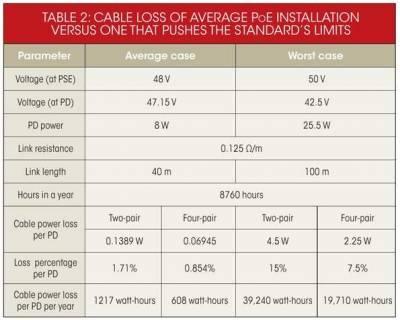
What are the cabling implications?
Minimise the number of cables per bundle
Larger cable bundles experience the highest amount
of temperature at their core, so splitting a large cable
bundle into smaller cable bundles is an easy way to decrease heat. Also consider no bundling and use cable trunking/baskets instead.
Increase the cabling category size
Higher cable categories consistently maintain lower temperatures than lower categories. Higher category cables often comprise of thicker jackets increasing distance between cables | larger dividers giving greater distance between wire pairs | larger wire size reducing heat creation
Install shielded cabling
Although more costly, a work around is to install higher shielding cabling for larger cable bundles. Shielded cable will help increase the insulation of your PoE cable bundles.
PoE is already a compelling option for supplying modest amounts of power to devices that are integrated into an Ethernet network because it significantly reduces installation costs for powering the end device. In that respect, PoE has already achieved significant market success. However, some applications have been locked out of using PoE due to the lower power delivery of the two previous standards, so by extending the power limit to accommodate new types of powered devices, the new PoE standard can certainly lead to growth.





